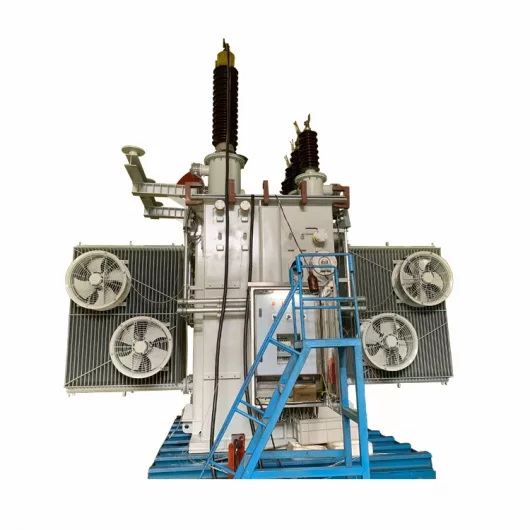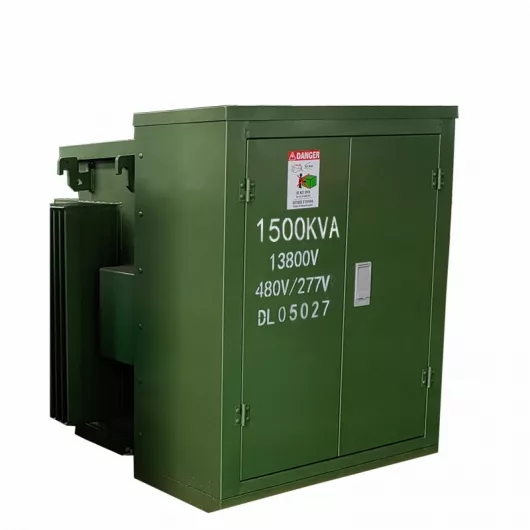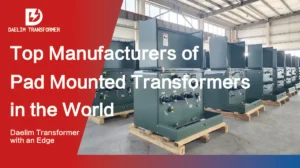
How to Choose Pad Mounted Transformer?
Table of Contents Selecting the right pad-mounted transformer requires careful consideration of several critical factors, as these ground-mounted distribution transformers play a vital role
ELECTRIC, WITH AN EDGE
With the rapid development of society and economy, the power consumption in the process of economic construction continues to increase, resulting in a substantial increase in the power load of the substation, and the operating environment is more complicated.
In the substation, the station transformer is the most important power equipment, which plays a key role in the operation of the substation.
Therefore, during the construction of the substation, in order to ensure the normal operation of the substation, it is necessary to do a good job in the selection and capacity calculation of the station transformer, select the appropriate station transformer for the substation and improve the safety and stability of the operation of the substation.
Transformer loads in substations can be divided into the following three categories:
Preventive measures for tripping of three-side switch of 110kV main transformer
When calculating the transformer load for substation stations, the following principles need to be adhered to:
What is the no load losses of transformer?What is the short-circuit loss of the transformer
In the selection of transformers for substation stations, it is necessary to select a suitable transformer according to the type and impedance of the transformer.
The connection group of substation station transformers needs to ensure that the output voltages of the station working transformer and the standby transformer are the same. In general, there are mainly two types of connection groups for station transformers: D, yn and Y, yn.
Compared with the station transformer of group Y, yn, the zero sequence impedance of the station transformer of group D, yn is smaller, and its impedance value is basically the same as the positive sequence impedance, which will increase the single-phase short-circuit current , And reduce the difference between the short-circuit current and the three-phase short-circuit current.
At the same time, it can also effectively improve the sensitivity of the protection equipment during a single-phase short-circuit, and simplify the protection method. There is no need to set up a separate single-phase short-circuit protection, and the overcurrent protection on the high-voltage side is used together.
In the station transformers of group D, yn, the triangular winding can provide a path for the third harmonic current or zero sequence current, making the voltage closer to the sine wave, and effectively improving the quality of the voltage waveform.
At the same time, if the three loads on the low-voltage side are unbalanced, the neutral point of the low-voltage side of the transformer will not have a floating displacement, which can ensure that the quality of the power supply voltage meets the relevant requirements. Therefore, the station transformer needs to choose the transformer of the group D, yn.
When selecting the impedance of a transformer, it is necessary to base on the short-circuit current withstand capability of low-voltage electrical appliances. Generally, an ordinary transformer with a standard impedance is selected.
When selecting transformers for substation stations, it is necessary to calculate the capacity of the transformers and determine the transformers to be used according to the calculation results. In the process of calculating the transformer capacity, it is necessary to reflect the continuous operation and regular short-term operation of the equipment and its load in the substation. For infrequent short-term operation and occasional and infrequent operation of equipment and its load conditions, it does not need to be considered.
At the same time, in the actual calculation process, it is necessary to classify the load status of the electrical equipment in the substation, and convert the actual load of the equipment to prevent the deviation of the calculation result from the actual load in the calculation process. The choice has an adverse effect.
In addition, it is also necessary to divide the load generated by different types of electrical equipment and its lines. In the division process, the single continuous load operation time is more than 2h, which is the continuous load requirement, and the single continuous load operation time More than 10 minutes and less than 2 hours is a short-time load. If the load is operated to no-load or stopped and the cycle of repeated periodic work is within 10 minutes, it is an intermittent load. Among them, the frequently used loads are mostly used every day, and the infrequently used loads are mostly not used under normal conditions, but used in the case of failure or maintenance.
All in all, during the construction of the substation, the selection of station transformers and the calculation of the capacity play a very important role. Only by doing this work can the normal operation of the substation be guaranteed.
Therefore, we must clarify the classification of the substation transformer load, select the type and impedance of the substation transformer according to the actual situation, and then calculate the transformer capacity to ensure that the selected transformer and its capacity meet the use requirements of the substation and ensure that the configuration of the substation Reasonable, improve the safety and stability of the power system operation.





Table of Contents Selecting the right pad-mounted transformer requires careful consideration of several critical factors, as these ground-mounted distribution transformers play a vital role

The primary function of the pad mounted transformer is to serve as a critical distribution transformer that steps down higher primary voltage from utility distribution

A pad mounted transformer operates through electromagnetic induction, serving as a crucial distribution component that converts high voltage electricity to lower, usable voltages for residential

When looking for the best pad-mounted transformer manufacturer, it’s important to find industry leaders known for reliability and innovative solutions. Pad-mounted transformers are essential in
After filling in the contact information, you can download the PDF.